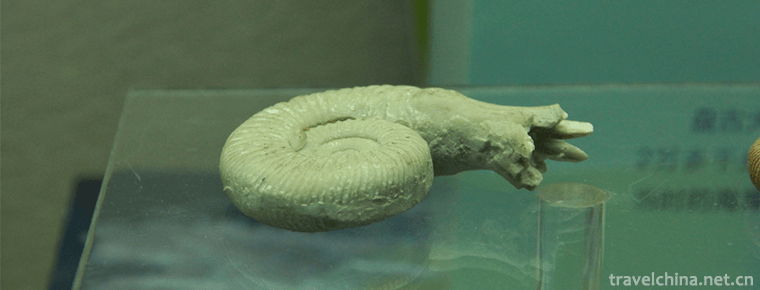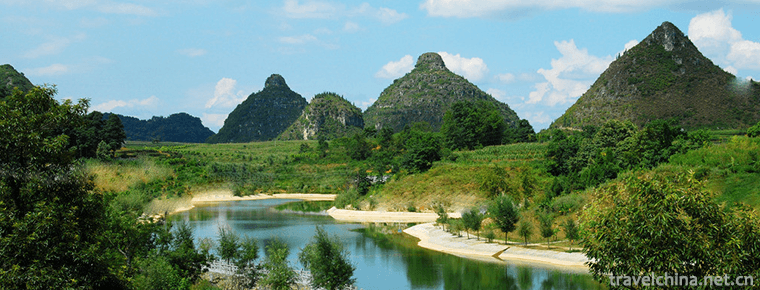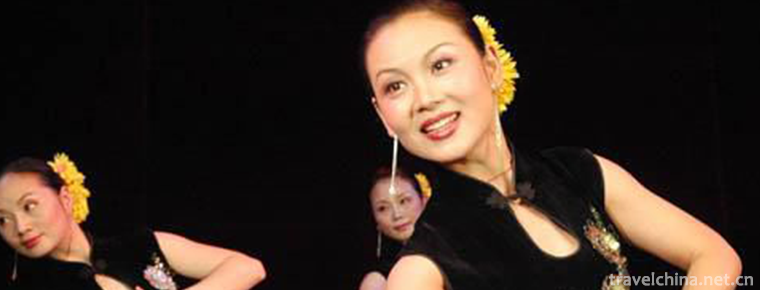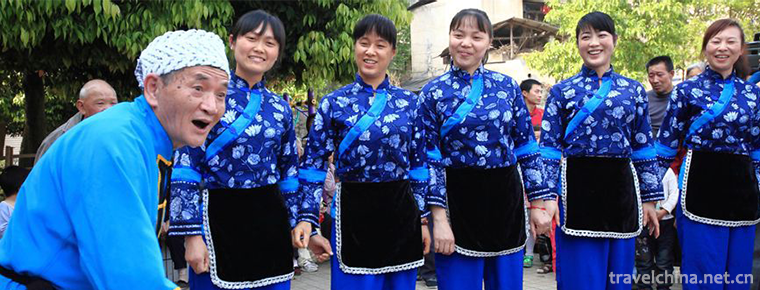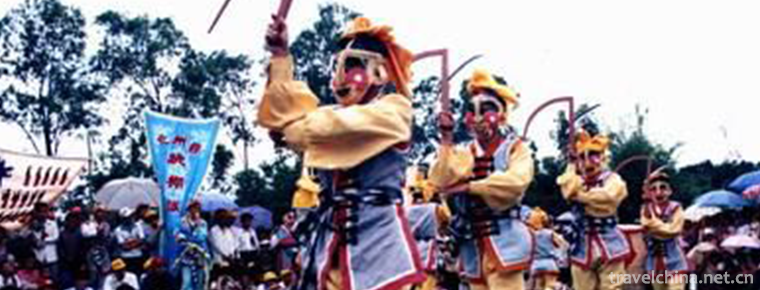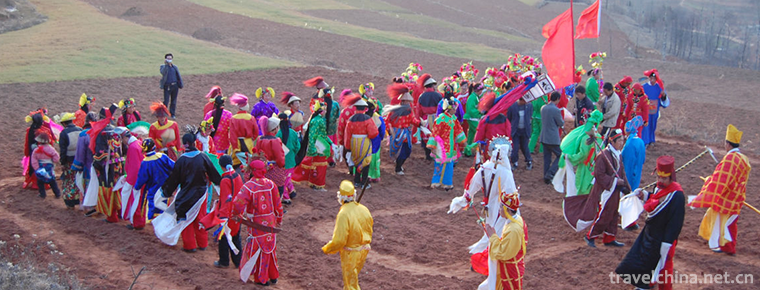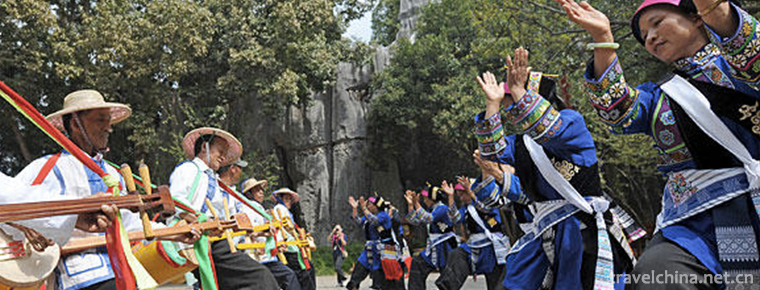Winter capture of Chagan Lake
Winter capture of Chagan Lake
Winter fishing in Chagan Lake, namely ice and snow fishing (or hunting) in Chagan Lake in winter, is a traditional fishery production mode (custom) in Qianguoerros Mongolian Autonomous County, Songyuan City, Jilin Province. As early as the Liao and Jin Dynasties, Chagan Lake Winter Capture enjoyed a great reputation. Despite the change of years, the magic, mystery and sacredness of Chagan Lake's winter capture remain.
The winter catching wonder of Chagan Lake has been listed in the provincial intangible cultural heritage list of Jilin Province.
Chagan Lake is one of the eight famous sceneries in Jilin Province.
Historical development
Historical records
According to historical records, the real winter capture of Chagan Lake can be traced back to the Liao and Jin Dynasties.
According to historical records, Emperor Sheng Dazong liked to eat "ice fish". Every December, he led his family to camp on the frozen Chagan Lake. The servant was ordered to scrape the ice in the tent until it was as thin as paper, and the fish moving under the ice could be seen clearly.
When you have enough to eat, you will break the thin ice gently, and the fresh fish in the water will jump on the ice one after another and become the object of the case for the king and ministers to feast.
Historically, it is customary to call this fishing method "hook fish".
In addition, fishing in Chagan Lake in winter is easy to preserve and transport, so this ancient way of winter fishing continues to this day.
Every year from mid-December to mid-January, the spectacular winter capture scenes attract many domestic and foreign tourists to watch.
Modern development
In order to inherit this ancient fishing method and promote the development of tourism economy, Chagan Lake Tourism Development Zone holds ice and snow fishing and hunting cultural tourism festival in December every year, which has been successfully held for thirteen years.
In 2004, according to the Asia-Pacific Humanistic and Ecological Value Assessment System, the Chinese Urban Research Association listed Chagan Lake Winter Harvest as "One Hundred Wonders of China" and included it in the Blue Book Catalogue of "Ecological and Historical Wealth with Retentive Value in Asia-Pacific International".
In 2006, the Chagan Lake Ice and Snow Fishing Tourism Festival was also named China's top ten ecological festivals by the annual meeting of China's tourism industry.
In 2008, the Chagan Lake Winter Arrest was approved by the State Council as a national intangible cultural heritage, and the Chagan Lake Tourism Area was also designated as a national intangible cultural park by the Ministry of Culture.
Activity process
Memorial to the lake
At the sacrificial ceremony of the winter harvest, the Mongolian girls dressed in costumes offered dried milk to the fishermen. The Lama handed the offerings to the "fishing handle head" one by one, and the "fishing handle head" placed the offerings on the offering table in order. Then he put the nine Bingxiang incense in three incense burners and lit them. Then he led the lamas to circle the offering table, the ice cave and the ice and snow Obao clockwise and recite the sutras. Afterwards, the fisherman stood in the middle of the venue and held up the wine bowl. He raised his head with both hands and began to recite the worship to the lake: "Ah!
Long life, the spirit of ancestors; ah! Protect all living beings, seek prosperity and prosperity. Chagan Lake, God's Mirror of the Father; Chagan Lake, Earth Mother's eyes, all living creatures, perpetual reproduction; gathered in the bosom of Chagan Lake, Tianyuan, all held in the hands of Chagan Lake treasures; Nine gifts, with all sincerity, ice flowers on the upper layer of the lake, sparkling the Eight-Way Elves. Nine sandalwood sticks, nine pines, nine hadas, nine offerings; ah! Thousands of miles of ice-bound sacrificial lake, thousands of hectares of Lake competing?“
Afterwards, the fisherman took a lama's wine from the table, held a wine bowl in his hand, knelt down in front of the ice cave, and shouted, "Chagan Lake winter fishing net awakened, and began offering sacrifices to the lake!" A sacrifice to the everlasting heaven! Sacrifice the earth that gives us life! The three sacrifices raised our Chagan Lake! "Several Mongolian girls heard the sound and went to the ice and snow Aobao, tied Hada around the pine and cypress branches on the Aobao; other Mongolian youth scattered sugar and milk into the sky; the Lama poured wine and offerings into the ice cave, and then everyone circled around the ice and snow Aobao for three times.
After offering sacrifices to the lake, the "fishing handler" took the "fishing catcher" in his hand, stirred several times in the ice cave that had been chipped, and made a vigorous lift, and drew a fat-headed fish from the lake. This is called "open Lake head fish". The fish twists constantly in the air, falls on the ice and jumps up and down. The scale weighs 32 kilograms.
beach seine fishing
After drinking the Zhuangxing liquor, with the head of the fish "on the ice", all the winter catchers jumped on the tramcar or plough, three-hung carriage, more than 60 people, and went to work on the ice. At this time, firecrackers burst into flames, the roar of horse-drawn carriages, the trumpet of fish handles, firecrackers, Lamas'chanting, horse bells, drums and trumpets were floating mysteriously on the surface of Chagan Lake, making the silent snow field full of extremely attractive charm.
When the net car arrives at the net yard, it is positioned by the head of the fish, commonly known as "drawing nest". After locating the head of the fish according to the lake's bottom and water depth, the first ice hole is cut for the bottom mesh, and then the position of the fin flag is determined by hundreds of steps from the bottom mesh to both sides (70-80 degrees in the direction of the front), and the big flag (or lamp) is inserted. The head of the fish moves hundreds of steps from the position of the fin flag to the front, and is determined as the round flag. Then the position of the two round flags converges hundreds of steps ahead. To determine the mesh and insert the net flag, the ice surface planned by these flags is the net nest. The size, direction and shape of the net nest, the angle from which the fish send the flag to the head, preparation, etc. are all inherited by the head teacher and constantly enriched and improved in practice. There is a lot of knowledge in it.
After the "fish head" inserts the flag, it cuts an ice hole every 15 meters from the bottom mesh to the flag. Then it cuts through the rod (18-20 meters long slender rod). The rod inserted under the ice is pushed down to the next ice hole by the walking hook. A water line (1 cm thick polyethylene rope rope rope rope) is tied at the back of the rod. The water line is tied up behind the water line, and the water line is pulled by the water strand. The rope drives the big tapestry forward, the horse wheel twists the big tapestry forward with the big net, followed by the head of the net with a big hook to put the net bit by bit under the ice, and at any time grasp the light and sink of the net. When both sides of the net are in and out of the net, the whole net has been put into the water. At this time, all the fish in the water are enclosed in the net.
Next comes the Internet. The net wheel is pulled out by three horses. The two sides of the net are combined by the drought and hook on the net wheel. 96 nets form a big net. At the same time, three of each wing are pulled out, called one pull, 16 pull out. The first pulls no fish, the second pulls out the fish. When fishing out, the fish hanging on the net are directly pulled onto the ice surface with the net and then taken off. The fish floating at the outlet of the net are fished out with the "fish". Finally, for every reason of fishing, more fish are concentrated in the belly of the net. The net belly is a pocket at the back of the net. A net belly can hold up to one million jin of fish catch. After fishing the fish in the net belly, the net belly is pulled out of the ice and the fish is transported by truck. The net was loaded on the plough again by shaking, twisting spears and hooking, and the winter catches were over.
Festival celebration
Every year, the local fishing and hunting culture festival is held, attracting tens of thousands of tourists to come to watch winter fishing and fish tasting.
On December 28, 2016, the 15th Ice and Snow Fishing and Hunting Cultural Festival of Chagan Lake, Songyuan, China opened .
world record
On January 3, 2009, the winter catch of Chagan Lake in Jilin Province was 168,000 kg in single net, breaking the world record of 104,500 kg in single net production set in 2006 and setting a new Guinness world record of the highest single net under ice catch.
Head fish auction
In 2008, the transaction price of head fish was 11099 yuan.
In 2009, the head fish weighed more than 20 kilograms, with a starting price of 13,000 yuan and a turnover price of 68,000 yuan.
In 2010, the head fish weighed 20 kg, with a starting price of 68,888 yuan and a turnover price of 288,888 yuan.
In 2011, the head fish weighed 39 kg, with a starting price of 90,000 yuan and a turnover price of 299,999 yuan.
In 2012, the head fish weighed more than 30 kilograms, with a starting price of 110,000 yuan and a turnover price of 340,000 yuan.
In 2013, the head fish weighed about 30 jin, the starting price was 88888 yuan, and the transaction price was 288888 yuan.
In 2014, the head fish weighed more than 30 kilograms, with a starting price of 99999 yuan and a closing price of 369999 yuan.
In 2015, the head fish weighed about 39 kg, with a starting price of 88,888 yuan and a closing price of 78,888 yuan.
In 2016, the head fish weighed about 50 kg, with a starting price of 188888 yuan and a closing price of 858888 yuan.
In 2018, the turnover price of head fish was 999999 yuan.
Program recording
"Great Challenge" The second season of extreme work came out this week. Sabenin and Yue Yunpeng went to Chagan Lake to work in the freezing temperatures below 40 degrees to challenge winter ice and snow fishing. The temperature is too low to freeze Sabenin's whole heart. The height disadvantage affects the technical development. However, Sabenin still works on the model and jumps into the ice cave to measure the depth.
This week Sabenin and Yue Yunpeng came to Chagan Lake in Northeast China, where they can reach minus forty degrees in winter, and even freeze people's ears when it's coldest. Xiao Sagan is witty and ridiculous. Lejia's bald head "can freeze hair out" here. The two men, armed with gloves, earbags, leather hats and sheepskin jackets, walked on the ice, which made them marvel. This time, the Sayue Group accepted a part-time job, fishing on the ice in Chagan Lake, which required 20 "ice eyes" to brave severe cold. They dig ice holes with ice drills and shovels. They need to use ice cones to dig holes, and then use ice shovels to dig out ice debris, which has not been cut through for a long time. Sabenin simply changed into a human flesh measuring scale and jumped into the hole to test the depth. In order to complete the task, Xiao Sa also put together, took off his gloves and hats and began to rush to work, but his height was limited, the handle of the ice shovel was too long, so that his posture was always wrong. Yue Yunpeng, a frustrated coal miner earlier, turned upside down and made use of his weight advantage to make "ice hole" permeable with two smashes. When he used ice drills to dig holes, he quickly mastered the tricks and was highly praised by his master. Yue Yunpeng admires Xiao Sasheng's perseverance, perseverance and hard work. The more skilled he is, the more skilled he is, the more energetic he is like an electric motor. "Sage, you are the best!"

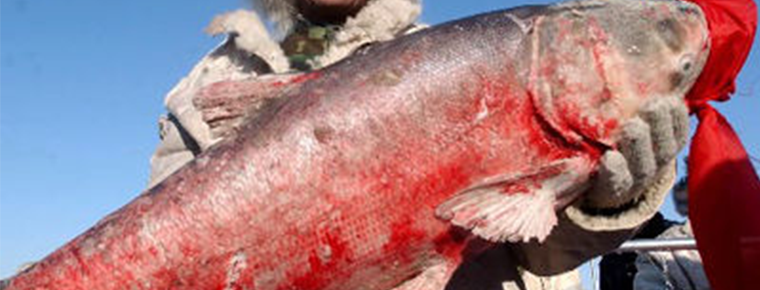
-
Baiyun Mountain
located in Baiyun District of Guangzhou City, Guangdong Province.
Views: 164 Time 2018-10-12 -
Alice tomato noodles
The Ali brand was born in 2001 and officially launched in 2005. The brand popularity and honor of Ali Juice Noodle series products are constantly improving.
Views: 239 Time 2018-11-26 -
Chengjiang biota
Chengjiang biota is located near Maotianshan, Chengjiang, Yunnan Province, China. The stratum of Chengjiang biota is yellow-green silty shale of Yudanshan section of Qiongzhusi Formation of Lower Camb.
Views: 148 Time 2019-01-05 -
Shuangrufeng Scenic Area
Guizhou Shuangrufeng Scenic Area is located in Zhenfeng County, Guizhou Province. It is 9 kilometers away from the county town and on the main road of Zhenfeng-Guiyang.
Views: 164 Time 2019-02-08 -
Changde silk string
Changde Silk String is a traditional local music popular in the Yuanjiang and Lishui areas of Changde, Hunan Province. At the end of Ming Dynasty and the beginning of Qing Dynasty.
Views: 148 Time 2019-04-16 -
Mudong Mountain Song
Mudong folk song is a traditional folk song sung by the people of Mudong Town, Banan District, Chongqing City. Mudong folk song is a folk song sung by the people of Mudong Town, Banan District, Chongq.
Views: 127 Time 2019-06-06 -
Tiger dance shua laohu
Tiger dance, also known as "playing tiger" ("playing" Jiaozuo dialect refers to "playing" and "performing"), is said to have appeared in the Western Han Dynasty.
Views: 205 Time 2019-06-15 -
Flower hopping shed
Dancing Huapeng, introduced from Fujian in Ming Dynasty, is an ancient traditional folk dance, belonging to Nuo dance. It has a fixed "Keben" (singing desk book), which is divided into 18 br.
Views: 248 Time 2019-06-21 -
Wudu Alpine Opera
Wudu Alpine Opera, also known as Alpine Opera, is one of the two unique local operas in Gansu Province. In 2008, Wudu Alpine Opera was selected as the second batch of national intangible cultural heri.
Views: 168 Time 2019-06-30 -
Trichord Dance of Yi Nationality
Trichord dance of the Yi nationality is a folk dance handed down from generation to generation by the people of the Yi nationality. Different areas or different tribes of the Yi nationality have diffe.
Views: 138 Time 2019-07-12 -
Anhui University of Finance and Economics
As a multi-disciplinary finance and economics university, economics, management and law are the first batch of universities that have the right to grant bachelor's degree and the third batch of granti.
Views: 186 Time 2019-09-30


